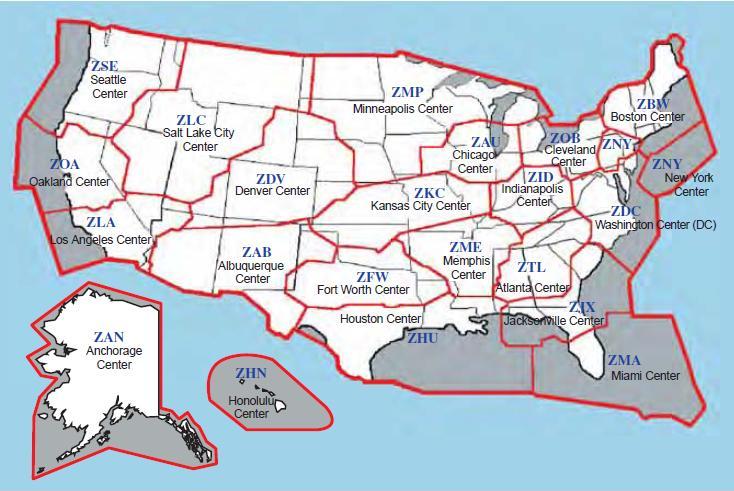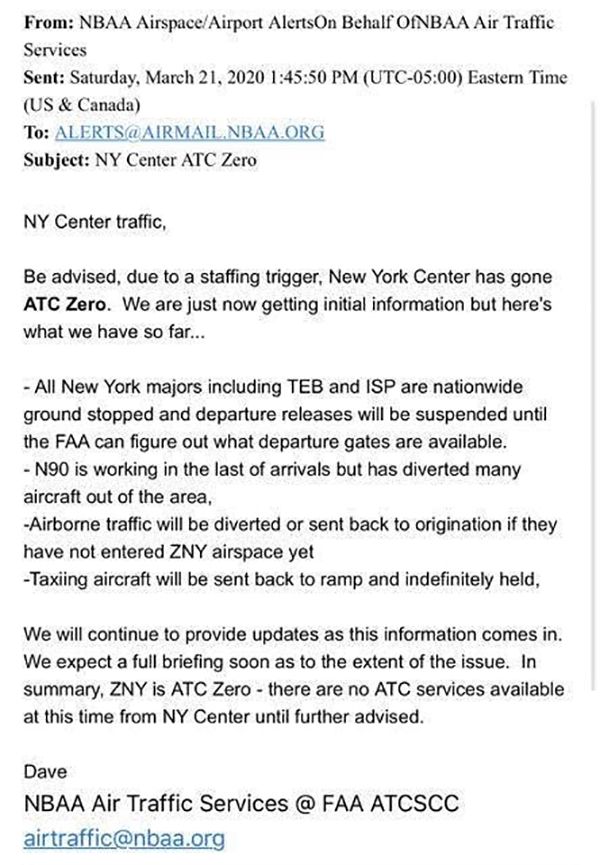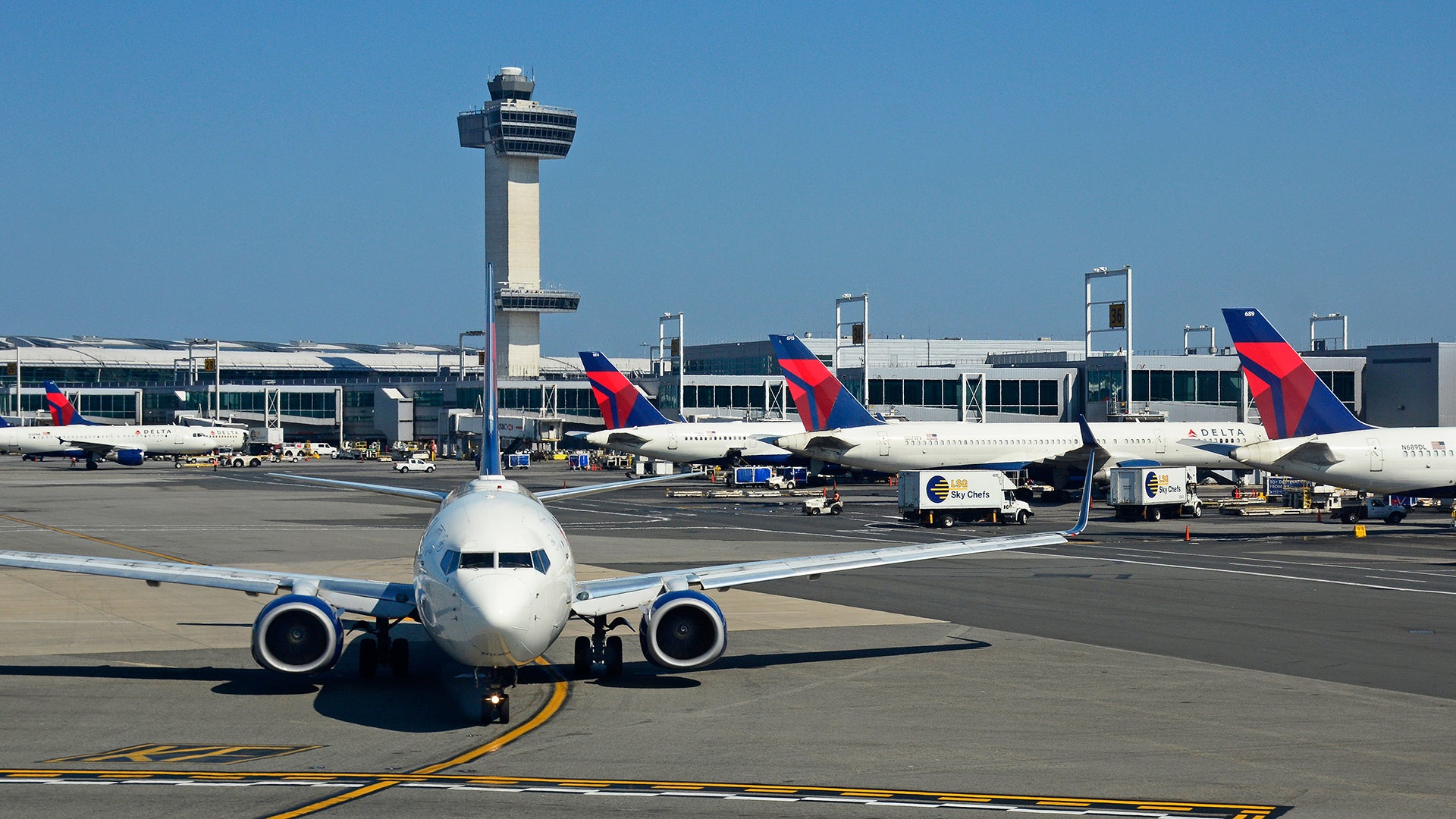One of the latest developments in regards to the effects the global pandemic known as COVID-19 is having on aviation was the shutting down of New York Center, referred to as ZNY. ZNY is an ARTCC (Air Route Traffic Control Center) and one of the most critical in the world. A ground stop order was issued for JFK, Laguardia, Philadelphia, Teterboro, Long Island Mcarthur, and Newark Liberty International Airports. It was subsequently lifted and air traffic has been rerouted. The closure was the result of a trainee at the center testing positive for COVID-19.
This is only the latest of this week’s growing list of Air Traffic Control limitations and shutdowns. It’s unknown just how much more our country’s National Airway and Air Traffic Control Systems can take before a high-level shutdown becomes a potentiality or even necessary.
Yesterday ZID, Indianapolis Center, which is another ARTCC, closed its eastern sectors after positive COVID-19 tests among its air traffic controllers. No air traffic services were provided above FL230, which is 23,000 feet. Traffic was subsequently routed around the area.

The first notable example of this type of event occurred on Tuesday of this week at Chicago Midway (KMDW)’s air traffic control tower. It went ‘ATC zero’ over three staff members testing positive for COVID-19. The facility was evacuated and the tower was closed.
A recording advising pilots that Midway was evacuated and closed can be listened to here. Flights were diverted and ground stops were issued for flights headed to Midway or attempting to depart the airport. Eventually, the airport continued to function without prolonged ground stops as an uncontrolled airfield.
Airline pilots reverted to announcing their intentions over a CTAF (Common Traffic Advisory Frequency) and managed their own landing, taxi, and takeoff deconflictions. In a bizarre turn of events, student pilots took advantage of the situation and began taking off and landing at MDW for fun.

On Wednesday of this past week, the 18th of March, a similar situation unfolded at KLAS, McCarran International Airport in Las Vegas. Pilots also used a CTAF for communication after the tower closed for a COVID-19 related evacuation. You can listen to airliners departing and arriving via CTAF here. Pilots self-announce and keep one set of eyes outside at all times.
Another recent Air Traffic Control tower closure at Salt Lake City International Airport was unrelated to COVID-19. Salt Lake City experienced a magnitude 5.7 earthquake, also on March 18. Reports from controllers claim the tower swayed up to 18 feet and needed to be evacuated.
There is an elevated risk of incidents with reduced services, and it’s one that pilots are trained to handle and mitigate. After all, pilots spend a lot of time self-announcing and separating themselves at uncontrolled airports, but it is not a common practice for airliners at highly trafficked international airports.
We suspect this may be the tip of the iceberg. Some employers are waiting until someone has symptoms to send them home or have them tested. The WHO and CDC have established that the COVID-19 Virus can spread through asymptomatic individuals who often believe they are perfectly healthy. This complicates mitigating the risk of spreading the disease among groups of people that have to work in close proximity to one another and in enclosed spaces, such as air traffic controllers.
The primary concern for these eventualities relates to delays caused by ATC facility closures and the health of air traffic controllers and ultimately all air transportation workers and passengers. Further, facility closures and reduced services bring us one step at a time closer to greater delays, cancellations, and closures, up to and including the possibility of a complete stoppage of all civil aviation.

Right now, airliners are being flown with few passengers and even no passengers while airlines attempt to stay temporarily competitive for time slots and gates at busy airports. The War Zone has obtained documents from airlines telling their employees to expect massive reductions in air travel services and subsequent layoffs. Domestically, Compass and Trans State Airlines have already announced they are ceasing operations and others are expected as airlines are asking for tens of billions of dollars in aid from the federal government.
COVID-19 has had a massive effect on aviation already and we are only beginning to feel its effects. The United States Government COVID-19 response plan dated March 13th, 2020, is telling government officials to assume that in the absence of data on the virus, there will be multiple waves of this pandemic lasting up to 18 months.
As it sits now, these closures have been intermittent and have been mitigated by fallback procedures. But as the virus quickly extends its presence across America, it is unclear just how much disruption the country’s air traffic control system is capable of enduring.
We will keep you up to date as this unprecedented set of circumstances continues to unfold.
UPDATE: Here is the message from the FAA:
The author is a 5,000 hour Airline Transport Pilot and Commercial Helicopter Pilot, type rated in private jets and with over a decade’s experience managing and flying private aircraft. He has a wide breadth of experience in aviation, having flown people from all backgrounds into and out of everything from small mountain airstrips to large international airports.
Contact the editor: Tyler@thedrive.com
